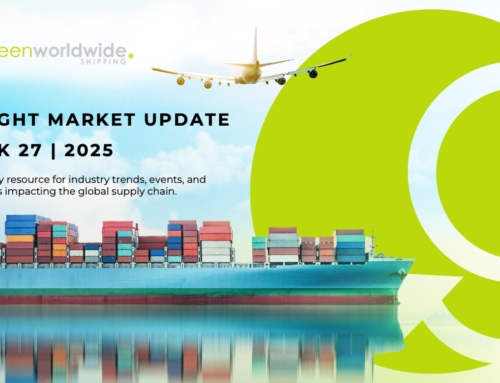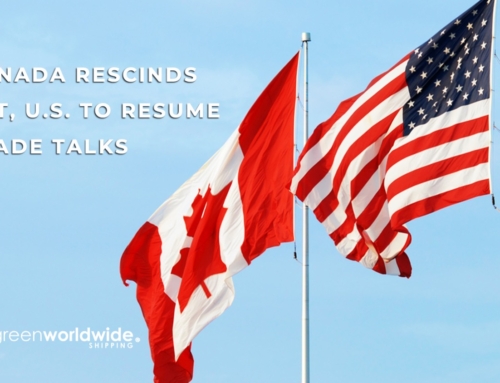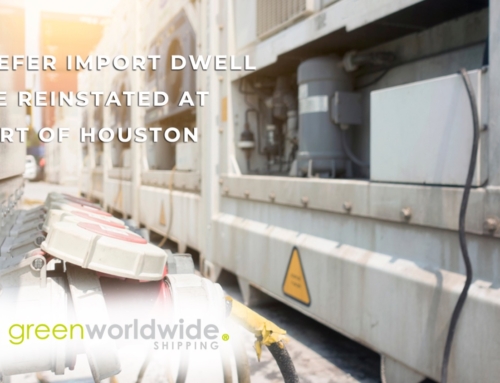The Panama Canal and the Suez Canal are important maritime passageways in the global supply chain. Strategically located to facilitate efficient trade, these canals act as connectors between major trading zones. The Panama Canal links the Atlantic and Pacific Oceans, offering a faster route for vessels navigating between North and South America. Similarly, the Suez Canal serves as a shortcut between the Mediterranean and Red Seas, optimizing travel between Europe and Asia. Disruptions to these networks trigger delays, impact vessel routes, and often lead to increased costs.
PANAMA CANAL CONGESTION
The Panama Canal serves ocean vessels navigating between the Atlantic and Pacific Oceans. Roughly 6% of global maritime trade volume moves through the canal annually. Recent rains brought some relief to the Gatun Water system, allowing the Canal to slightly increase daily transits to 24 vessels daily in the Neo-Panamax locks (still well below the average 40+ vessels per day under normal conditions). Approximately 117 vessels are in the queue to pass through the canal with more arriving each day. An extended drought has hampered canal operations for months leading to canal congestion, delivery delays, transition to dry canals, and adopting alternate ocean routes.
SUEZ CANAL OCEAN VESSELS REDIRECTED
Approximately 15% of global seaborne trade moves through the Red Sea, including 8% of the world’s grain trade, 12% of seaborne-traded oil, and 8% of the global liquefied natural gas trade. All twelve major ocean vessel carriers are redirecting their vessels around the Cape of Good Hope to ensure the safety of their crew, vessels, and freight from missile attacks. This decision results in additional costs and weeks of delay in the delivery of goods.
“…International shipping companies continue to reroute their vessels around the Cape of Good Hope, adding significant cost and weeks of delay to the delivery of goods, and ultimately jeopardizing the movement of critical food, fuel, and humanitarian assistance throughout the world…We remain committed to the international rules-based order and are determined to hold malign actors accountable for unlawful seizures and attacks.”
Joint Statement | United States, Australia, Bahrain, Belgium, Canada, Denmark, Germany, Italy, Japan, Netherlands, New Zealand, Republic of Korea, Singapore, United Kingdom
Operation Prosperity Guardian
A multinational effort dubbed, Operation Prosperity Guardian, has been initiated to address challenges in the region and ensure freedom of navigation in the Red Sea and Gulf of Aden. Under the leadership of Task Force 153, a U.S. Navy-led initiative focused on maritime security in the Red Sea, forces from various nations will collaborate within the framework of the Combined Maritime Forces. The U.S. Navy reported that approximately 1,500 merchant ships have safely transited the Red Sea since mid-December as part of Operation Prosperity Guardian.
PANAMA & SUEZ CANALS: IMPACT ON SHIPPING
The impact on shipping schedules, particularly for the nearly 20 weekly container shipping services on the Asia-Europe trade, poses challenges for carriers in recovering lost schedules and minimizing disruption for shippers.
“Our assessment is that 55 nations have direct connections to the ships who’ve been attacked (in the Suez Canal), whether through the flagging state, where the goods were produced or destined, or the nationalities of the innocent mariners aboard each vessel. The impacts of these attacks stretch across the globe.”
Navy Vice Admiral Brad Cooper | U.S. Naval Forces Central Command
Expected impacts on shipping include:
Increased Transit Times
The backlog of vessels waiting to transit the Panama Canal continues to swell even as the water levels slowly improve causing delivery delays. The increased time for vessels to travel around the Cape of Good Hope verses the Suez Canal adds 10-12 days to the voyage. Shippers should expect freight to take approximately 25 to 40 days to move through the global supply chain while these disruptions prevail.
Reduced Capacity & Equipment Shortages
Increasing travel times for vessels transiting around the Cape of Good Hope and the congested que to for vessels waiting to transit through the Panama Canal put a strain on both equipment availability and capacity. The more vessels there are moving through the supply chain for longer stretches of time will impact the capacity available for new shipments. As the situation prolongs, equipment availability will decrease due to the large volume of backlog moving through the ports.
Temporary Rate Increases & Surcharges
Ocean carriers implemented a Panama Canal Charge on June 1, 2023 ranging from $300 – $500 per container. In response to the attacks on container vessels in the Suez Canal region, carriers have announced Contingency Surcharges effective January 21, 2024, until further notice. These surcharges range from $297 to $1,200 per container. Expect temporary rate increases as equipment shortages and capacity constraints persist.
SUPPLY CHAIN RESILIANCE PLANNING
Green Worldwide Shipping works closely with vessel owners to mitigate shipping delays through route optimization, advanced planning, and careful consideration of alternative modes of transport.
Andy Bollefer, Branch Manager for Green Worldwide Shipping’s Dallas location stated that “working closely with clients and carriers is essential to ensure the timely delivery of freight during supply chain disruptions, like those currently impacting the Panama and Suez Canals.”
Partnering with a trusted freight forwarder grants shippers access to multiple carriers, additional routes, and modes of transit. While rate increases and shipping delays are likely unavoidable in the current market, trusting a reliable freight forwarder to provide vetted options is hugely beneficial to companies seeking to minimize inventory disruptions while keeping shipping costs reasonable.
Stay up-to-date on freight news with Green’s Weekly Freight Market Update by following us on Facebook, Instagram, and LinkedIn. For continuous updates, make sure to check out our website at greenworldwide.com.






